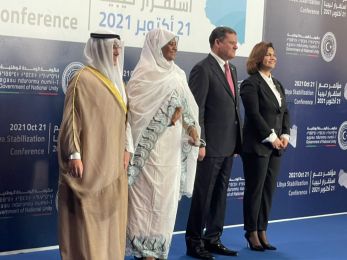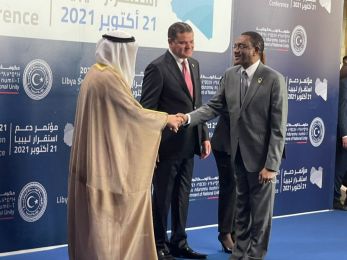Zimbabwe adopts National Industrial Development Policy 2019 –2023
Harare, Zimbabwe (PANA) - Government has adopted the Zimbabwe National Industrial Development Policy (ZNIDP) (2019 –2023) that envisions a contribution of 30 percent to the gross domestic product (GDP) from the manufacturing sector.
This would return the economy to its economic heydays. Currently, manufacturing is contributing about 10 percent to the country’s GDP weighed down by low production from shortages of foreign currency.
“Cabinet considered and approved the Zimbabwe National Industrial Development Policy (ZNIDP) (2019-2023) as presented by the Minister of Industry and Commerce, Mangaliso Ndlovu,” Information, Publicity and Broadcasting Services minister Monica Mutsvangwa, told journalists on Wednesday.
“The Industrial Policy is guided by the principles of value addition and beneficiation; export-led industrialisation; promotion of sustainable industrial development; gender mainstreaming and modernisation as well as upgrading of industrial equipment and machinery.”
The thrust of the policy will seek to attain the following: a manufacturing sector annual growth rate of at least two percent per annum; a 30 percent contribution to the national gross domestic savings; a manufacturing value added growth of 16 percent per year; a merchandise export growth rate of 10 percent per year; and increased employment in the manufacturing sector to 20 percent by 2023.
Mutsvangwa said attainment of the Industrial Policy’s goals would be predicated upon facilitation of “financing for industrial development; embracing the fourth industrial revolution; establishment of industrial clusters; pursuing the concept of Specific Economic Zones; mainstreaming the devolution agenda into industrialisation; fostering industrial competitiveness; provision of fiscal incentives for the manufacturing sector; and providing industrial skills training”.
According to the Confederation of Zimbabwe Industries (CZI), currently, the manufacturing sector is being affected by acute foreign currency shortages needed for importing raw materials.
I's also affected by the introduction of new policies and regulations that control how manufacturing firms source foreign currency that has left them struggling to get any.
For example, the introduction in February of the RTGS dollar and the forex interbank market where foreign currency can be traded, have both failed to improve forex liquidity.
Coupled with the continued devaluation of the RTGS dollar, the situation left manufacturing companies selling goods at a loss, forcing them to price their goods according to fluctuating forex rates.
This has allowed manufacturing firms to source foreign currency from the parallel market, albeit, at a high premium resulting in these companies increasing their prices beyond market affordability.
"This resulted in some companies scaling down, or closing some of their production lines. The majority of industry relies on imported raw materials and failure to access foreign currency severely affect their operations," CZI said.
Despite import substitution and export promotion policies introduced in 2016 and 2017, resulting in an average growth rate of 3 percent in capacity utilisation, the manufacturing sector continues to decline.
CZI said problems facing the manufacturing sector are the high cost and shortage of raw materials; foreign currency shortages; antiquated machinery and breakdowns; high cost of doing business; and drawbacks from the current macroeconomic environment.
Former CZI president Sifelani Jabangwe is on record stating that the manufacturing sector needs US$2 billion to retool and to operate towards growth.
Apart from the industrial policy, the Zimbabwe Local Content Strategy (ZLCS) was drafted and presented to cabinet on Tuesday.
In light of the growing trade deficits where imports continue to outpace exports, the ZLCS is supposed to provide supporting measures to industry for increasing production to a point of adding to the GDP.
Mutsvangwa said the strategy, which is a component of the country’s Industrialisation Policy, aims to promote local value addition and linkages through utilisation of domestic resources.
Last year, government had to downgrade its initial growth projections for the manufacturing sector to 1.8 percent, from an original target of 2.8 percent due to challenges in the sector.
For 2019, the manufacturing sector is projected to grow by 4.4 percent.
-0- PANA TZ/AR 12June2019






